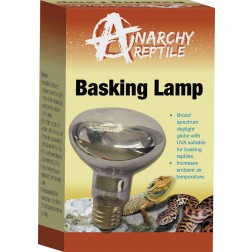Hey guys (and girls), just got a couple of Blue tongue Qs for you all as I would like to build up my knowledge about their care.
- What is the appropriate cage size recommended for one?
- Can they be housed together at a certain age or is it best to separate them at all times in their life?
- What is the best heat lamp to use for them? (assuming that a lamp is the best way to go)
- What temps should the basking site be?
- What is the best substrate to use?
- Feeding; How often? What to include in their diet? Etc
- UV light? Necessary? Or can one simply add stuff like calcium in their diet and not worry about UV?
- Does their care vary between different species/subspecies?
Looking forward to reading all of your responses.
Cheers,
Josiah.
120cm x 60cm floor space is great. Unlike snakes, I'd say more is better. You can get away with less and if things are set up well, 90 x 60cm can work, but I'd shoot for at least 120cm x 60cm. I wouldn't bother with more than 45cm in height, partly because it's not necessary and partly because it makes heating more difficult and less efficient.
You'll get different opinions on this, but most people keep them together. I've rarely had problems (not that I've kept Tiliqua in huge numbers, or recently).
A cheap spotlight from the hardware store or wherever. You can spend more if you enjoy having less money or funding con men.
Note that spotlights aren't entirely necessary, and they'll do perfectly fine with floor heat alone. But, naturally, they do like to bask and it's sort of nice to see them basking.
It's a more complicated question than you might think. If they constantly have access to floor heat over 30 degrees, they don't need a basking spot at all. If they don't have access to constant comfortable floor temperatures, especially if sometimes they get very cold (which is perfectly natural and healthy for cold climate species), a higher basking temperature is definitely beneficial and sometimes essential. If I'm going to bother offering a basking lamp for almost any reptile, I'll go for at least 45 degrees (in some cases 80 degrees or more). Keep in mind that even in a Melbourne or Tasmanian winter, on a sunny day it's easy to find natural basking spots of over 50 degrees (play with an IR thermometer on a sunny winter day, it's surprising).
So many options... too big a question to answer properly without writing a novel, but it largely comes down to personal preference and you can play around with all the obvious choices and see what suits you.
See above for feed. I'll just add that they're reptilian garbage cans, very adaptable, just don't overdo it with fruits. They love it like humans like lollies - a little is okay but don't give them much.
I've found UV to be a waste of time. With calcium and multivitamin and mineral supplements they do well regardless of UV. Without supplents, they don't, with or without UV. The big breeders generally don't use it, that should also speak volumes.
Yes.








